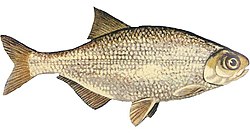| Mormyrus | |
|---|---|
 | |
| Scientific classification | |
| Kingdom: | Animalia |
| Phylum: | Chordata |
| Class: | Actinopterygii |
| Order: | Osteoglossiformes |
| Family: | Mormyridae |
| Genus: | Mormyrus Linnaeus, 1758 |
| Species | |
See text | |
| Synonyms | |
| |
Mormyrus is a genus of ray-finned fish in the family Mormyridae. They are weakly electric, enabling them to navigate, to find their prey, and to communicate with other electric fish. [1]





